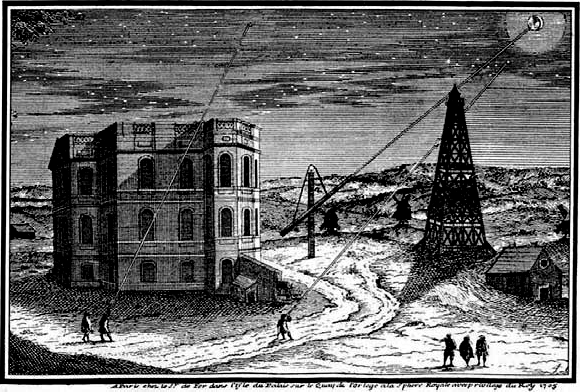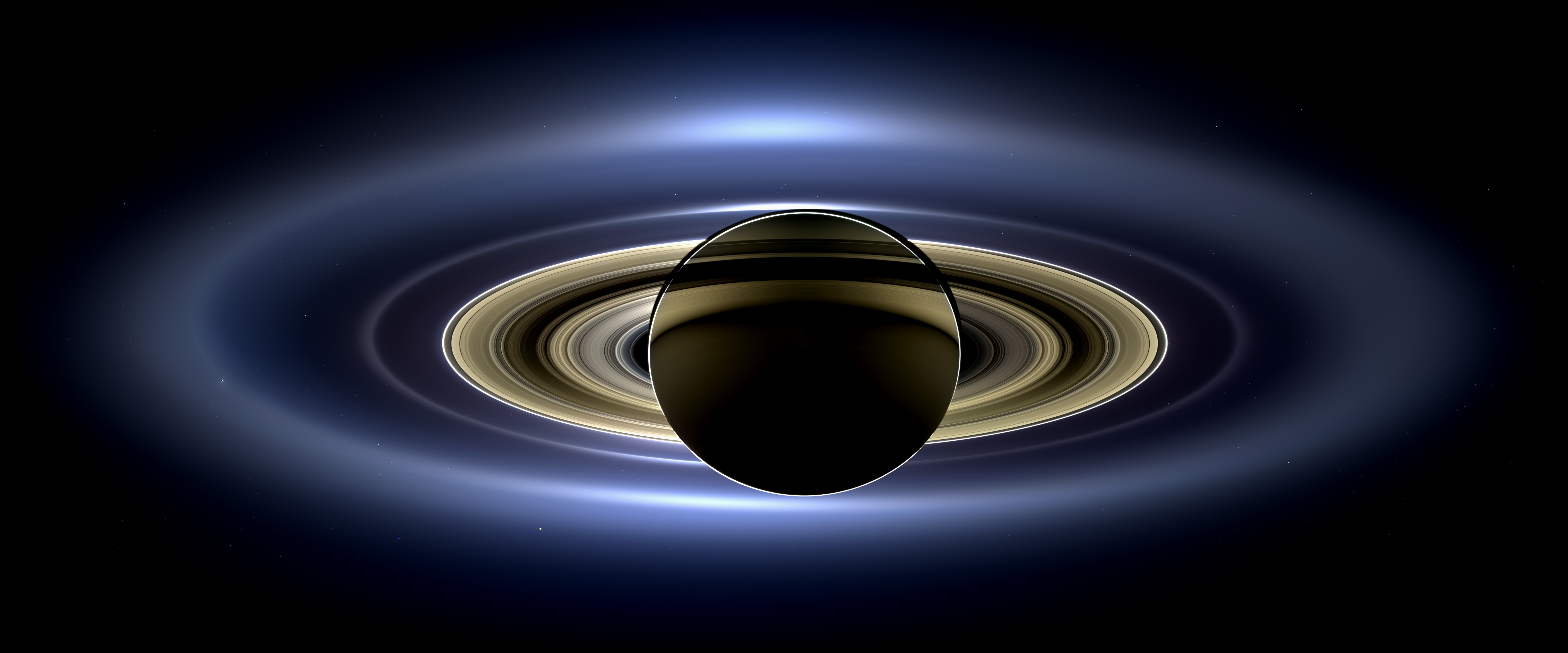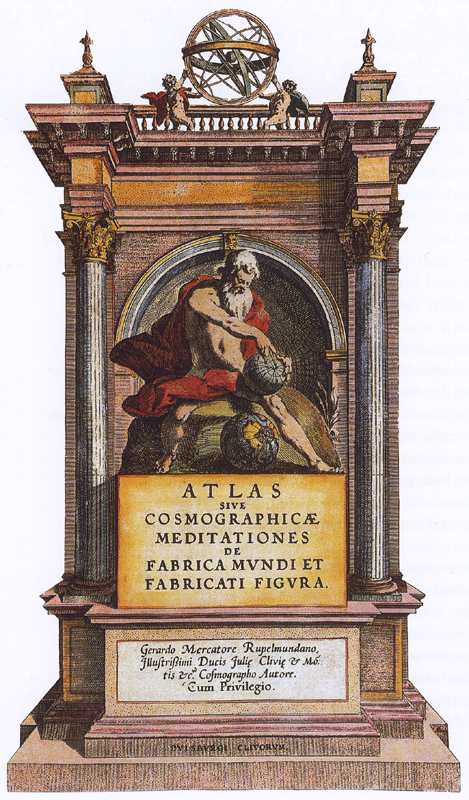|
Equatorial Ridge
Equatorial ridges are a feature of at least three of Saturn's moons: the large moon Iapetus and the tiny moons Atlas and Pan. They are ridges that closely follow the moons' equators. They appear to be unique to the Saturnian system, but it is uncertain whether the occurrences are related or a coincidence. Iapetus was discovered by Italian-born French astronomer Giovanni Domenico Cassini in October 1781; Atlas was discovered from the images taken by Voyager 1 during its flyby of Saturn in November 1980; while Pan was discovered by Showalter in the same year as Atlas. Lastly, the very small moon Daphnis, discovered by the '' Cassini'' in 2005, also appears to have such a ridge. All three equatorial ridges were discovered by the ''Cassini'' spacecraft. The ridge on Iapetus is nearly 20 km wide, 13 km high and 1,300 km long. The ridge on Atlas is proportionally even more remarkable given the moon's much smaller size, giving it a disk-like shape. Images of Pan show ... [...More Info...] [...Related Items...] OR: [Wikipedia] [Google] [Baidu] |
Iapetus
In Greek mythology, Iapetus (; ; ), also Japetus, is a Titan, the son of Uranus and Gaia and father of Atlas, Prometheus, Epimetheus, and Menoetius. He was also called the father of Buphagus and Anchiale in other sources. Iapetus was linked to Japheth (), one of the sons of Noah and a progenitor of mankind in biblical accounts. The practice by early historians and biblical scholars of identifying various historical nations and ethnic groups as descendants of Japheth, together with the similarity of their names, led to a fusion of their identities, from the early modern period to the present. Mythology Iapetus is the one Titan mentioned by Homer in the ''Iliad'' as being in Tartarus with Cronus. He is a brother of Cronus, who ruled the world during the Golden Age but is now locked up in Tartarus along with Iapetus, where neither breeze nor light of the sun reaches them. Iapetus' wife is usually described as a daughter of Oceanus and Tethys named either Clymene (according t ... [...More Info...] [...Related Items...] OR: [Wikipedia] [Google] [Baidu] |
Giovanni Domenico Cassini
Giovanni Domenico Cassini (8 June 1625 – 14 September 1712) was an Italian-French mathematician, astronomer, astrologer and engineer. Cassini was born in Perinaldo, near Imperia, at that time in the County of Nice, part of the Savoyard state. He discovered four satellites of Saturn (planet), Saturn and noted the division of its rings, later named the Cassini Division. Cassini was also the first of his family to begin work on the project of creating a topographic map of France. In addition, he also created the first scientific map of the Moon. The Cassini–Huygens, ''Cassini'' space probe, launched in 1997, was named after him and became the fourth to visit Saturn and the first to orbit it. Life Time in Italy Cassini was the son of Jacopo Cassini, a Tuscan, and Giulia Crovesi. In 1648 Cassini accepted a position at the observatory at :it:Panzano, Castelfranco Emilia, Panzano (Castelfranco Emilia), near Bologna, to work with Marquis Cornelio Malvasia, a rich amateur astron ... [...More Info...] [...Related Items...] OR: [Wikipedia] [Google] [Baidu] |
Moonlet
A moonlet, minor moon, minor natural satellite, or minor satellite is a particularly small natural satellite orbiting a planet, dwarf planet, or other minor planet. Up until 1995, moonlets were only hypothetical components of Saturn's F-ring structure, but in that year, the Earth passed through Saturn's ring plane. The Hubble Space Telescope and the European Southern Observatory both captured objects orbiting close or near the F-ring. In 2004, Cassini–Huygens , Cassini caught an object 4–5 kilometers in diameter on the outer ring of the F-ring and then 5 hours later on the inner F-ring, showing that the object had orbited. Several different types of small moons have been called moonlets: * A belt of objects embedded in a planetary ring, especially around Saturn, such as those in the Rings of Saturn#A Ring, A Ring, S/2009 S 1 in the B Ring (Moons of Saturn#Ring moonlets, "propeller" moonlets), and those in the Rings of Saturn#F Ring, F Ring * Occasionally asteroid moons, ... [...More Info...] [...Related Items...] OR: [Wikipedia] [Google] [Baidu] |
Solar System
The Solar SystemCapitalization of the name varies. The International Astronomical Union, the authoritative body regarding astronomical nomenclature, specifies capitalizing the names of all individual astronomical objects but uses mixed "Solar System" and "solar system" structures in theinaming guidelines document. The name is commonly rendered in lower case ('solar system'), as, for example, in the ''Oxford English Dictionary'' an''Merriam-Webster's 11th Collegiate Dictionary''. is the gravitationally bound Planetary system, system of the Sun and the objects that orbit it. It Formation and evolution of the Solar System, formed about 4.6 billion years ago when a dense region of a molecular cloud collapsed, forming the Sun and a protoplanetary disc. The Sun is a typical star that maintains a hydrostatic equilibrium, balanced equilibrium by the thermonuclear fusion, fusion of hydrogen into helium at its stellar core, core, releasing this energy from its outer photosphere. As ... [...More Info...] [...Related Items...] OR: [Wikipedia] [Google] [Baidu] |
Hill Sphere
The Hill sphere is a common model for the calculation of a Sphere of influence (astrodynamics), gravitational sphere of influence. It is the most commonly used model to calculate the spatial extent of gravitational influence of an astronomical body (''m'') in which it dominates over the gravitational influence of other bodies, particularly a Primary (astronomy), primary (''M''). It is sometimes confused with other models of gravitational influence, such as the Laplace sphere or being named the Roche sphere, the latter causing confusion with the Roche limit. It was defined by the United States, American astronomer George William Hill, based on the work of the France, French astronomer Édouard Roche. To be retained by a more gravitationally attracting astrophysical object—a planet by a more massive star, a natural satellite, moon by a more massive planet—the less massive body must have an orbit that lies within the gravitational potential represented by the more massive body ... [...More Info...] [...Related Items...] OR: [Wikipedia] [Google] [Baidu] |
Rings Of Saturn
Saturn has the most extensive and complex ring system of any planet in the Solar System. The rings consist of particles in orbit around the planet made almost entirely of water ice, with a trace component of Rock (geology), rocky material. Particles range from micrometers to meters in size. There is no consensus as to what mechanism facilitated their formation: while investigations using theoretical models suggested they formed early in the Solar System's existence, newer data from ''Cassini–Huygens, Cassini'' suggests a more recent date of formation. In September 2023, astronomers reported studies suggesting that the rings of Saturn may have resulted from the collision of two moons "a few hundred million years ago". Though light reflected from the rings increases Saturn's apparent brightness, they are not themselves visible from Earth with the naked eye. In 1610, the year after Galileo Galilei's first observations with a telescope, he became the first person to observe Saturn' ... [...More Info...] [...Related Items...] OR: [Wikipedia] [Google] [Baidu] |
Daphnis (moon)
Daphnis is an inner satellite of Saturn. It is also known as ; its provisional designation was .C.C. Porco, et al., IAUC 8524: ''S/2005 S 1'' May 6, 2005 (discovery) Daphnis is about in diameter, and orbits the planet in the Keeler Gap within the Rings of saturn#A Ring, A ring. Naming The moon was named in 2006 after Daphnis, a shepherd, pipes player, and pastoral poet in Greek mythology; he was descendant of the Titan (mythology), Titans, after whom the largest moons of Saturn are named. Both Daphnis and Pan (moon), Pan, the only other known shepherd moon to orbit within Saturn's main rings, are named for mythological figures associated with shepherds.Discovery Before it was photographed, the existence of a moon in Daphnis's ...[...More Info...] [...Related Items...] OR: [Wikipedia] [Google] [Baidu] |
Mark R
Mark may refer to: In the Bible * Mark the Evangelist (5–68), traditionally ascribed author of the Gospel of Mark * Gospel of Mark, one of the four canonical gospels and one of the three synoptic gospels Currencies * Mark (currency), a currency or unit of account in many nations * Bosnia and Herzegovina convertible mark, the currency of Bosnia and Herzegovina * East German mark, the currency of the German Democratic Republic * Estonian mark, the currency of Estonia between 1918 and 1928 * Finnish markka (), the currency of Finland from 1860 until 28 February 2002 * Polish mark (), the currency of the Kingdom of Poland and of the Republic of Poland between 1917 and 1924 German * Deutsche Mark, the official currency of West Germany from 1948 until 1990 and later the unified Germany from 1990 until 2002 * German gold mark, the currency used in the German Empire from 1873 to 1914 * German Papiermark, the German currency from 4 August 1914 * German rentenmark, a currency issued on 1 ... [...More Info...] [...Related Items...] OR: [Wikipedia] [Google] [Baidu] |
Equator
The equator is the circle of latitude that divides Earth into the Northern Hemisphere, Northern and Southern Hemisphere, Southern Hemispheres of Earth, hemispheres. It is an imaginary line located at 0 degrees latitude, about in circumference, halfway between the North Pole, North and South Pole, South poles. The term can also be used for any other celestial body that is roughly spherical. In three-dimensional space, spatial (3D) geometry, as applied in astronomy, the equator of a rotating spheroid (such as a planet) is the parallel (circle of latitude) at which latitude is defined to be 0°. It is an imaginary line on the spheroid, equidistant from its geographical pole, poles, dividing it into northern and southern hemispheres. In other words, it is the intersection of the spheroid with the plane (geometry), plane perpendicular to its axis of rotation and midway between its geographical poles. On and near the equator (on Earth), noontime sunlight appears almost directly o ... [...More Info...] [...Related Items...] OR: [Wikipedia] [Google] [Baidu] |
Atlas Rev09
An atlas is a collection of maps; it is typically a bundle of maps of Earth or of a continent or region of Earth. Advances in astronomy have also resulted in atlases of the celestial sphere or of other planets. Atlases have traditionally been bound into book form, but today, many atlases are in multimedia formats. In addition to presenting geographical features and political boundaries, many atlases often feature geopolitical, social, religious, and economic statistics. They also have information about the map and places in it. Etymology The use of the word "atlas" in a geographical context dates from 1595 when the German-Flemish geographer Gerardus Mercator published ("Atlas or cosmographical meditations upon the creation of the universe and the universe as created"). This title provides Mercator's definition of the word as a description of the creation and form of the whole universe, not simply as a collection of maps. The volume that was published posthumously one year afte ... [...More Info...] [...Related Items...] OR: [Wikipedia] [Google] [Baidu] |
Ridge
A ridge is a long, narrow, elevated geomorphologic landform, structural feature, or a combination of both separated from the surrounding terrain by steep sides. The sides of a ridge slope away from a narrow top, the crest or ridgecrest, with the terrain dropping down on either side. The crest, if narrow, is also called a ridgeline. Limitations on the dimensions of a ridge are lacking. Its height above the surrounding terrain can vary from less than a meter to hundreds of meters. A ridge can be either depositional, erosional, tectonic, or a combination of these in origin and can consist of either bedrock, loose sediment, lava, or ice depending on its origin. A ridge can occur as either an isolated, independent feature or part of a larger geomorphological and/or structural feature. Frequently, a ridge can be further subdivided into smaller geomorphic or structural elements. Classification As in the case of landforms in general, there is a lack of any commonly agreed clas ... [...More Info...] [...Related Items...] OR: [Wikipedia] [Google] [Baidu] |







